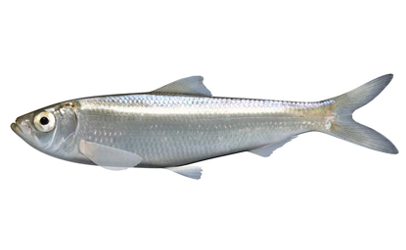 Apart from the fact that fish is rich in protein and low in saturated fat, it is also a good source of omega-3, a fatty acid which is known to reduce the risk of abnormal heartbeats that can cause sudden death. The same fatty acid also helps to decrease triglyceride levels, lower blood pressure, and slow growth rate of atherosclerotic plaque.
Apart from the fact that fish is rich in protein and low in saturated fat, it is also a good source of omega-3, a fatty acid which is known to reduce the risk of abnormal heartbeats that can cause sudden death. The same fatty acid also helps to decrease triglyceride levels, lower blood pressure, and slow growth rate of atherosclerotic plaque.
The American Heart Association suggests fish consumption at least two times each week, and each serving must be 3.5 ounces cooked which is equivalent to three-fourths of a cup of flaked fish.
Meanwhile, the North Carolina Division of Public Health states that consumers must avoid eating fishes that contain high levels of mercury. This health organization also listed some fishes that have low amounts of the said contaminant. Here are five of the fishes that pose less health risk.
No. 1 Salmon
 An evaluation of contaminant consumption risk regarding various POPs or persistent organic pollutants, including polychlorinated biphenyls, dioxins, and dioxin-like compounds referred to as DLCs, has found that Southeast Alaskan sockeye, coho, chinook, pink, and chum salmon, as well as Kodiak pink, coho, and chum salmon, are wild-caught salmon types that belong to the lowest risk category.
An evaluation of contaminant consumption risk regarding various POPs or persistent organic pollutants, including polychlorinated biphenyls, dioxins, and dioxin-like compounds referred to as DLCs, has found that Southeast Alaskan sockeye, coho, chinook, pink, and chum salmon, as well as Kodiak pink, coho, and chum salmon, are wild-caught salmon types that belong to the lowest risk category.
Aquabounty Technologies has also introduced Atlantic salmon which are genetically-engineered to increase its production. The U.S. Food & Drug Administration, after rigorous scientific review, has identified that genetically-modified salmon is as safe-to-eat as the conventional ones. This is based on comprehensive analysis of the scientific evidence, and 20 years of research, testing, development, evaluations, and regulations.
Meanwhile, the wild vs. farmed salmon controversy has become a complicated issue that draws attention on media, online and various scientific publications which all tend to provide contradictory reports. However, the Washington State Department of Health verified that both contain low amounts of mercury, PCBs, and other contaminants.
No. 2 Tilapia
 Along with various aquatic animals including shrimp and salmon, tilapia is one of the fishes that the American Pregnancy Association recommends for pregnant women because of its low mercury content. Eating 8 to 12 ounces of these fish is also advisable according to the FDA.
Along with various aquatic animals including shrimp and salmon, tilapia is one of the fishes that the American Pregnancy Association recommends for pregnant women because of its low mercury content. Eating 8 to 12 ounces of these fish is also advisable according to the FDA.
Oceana, the largest international organization for ocean advocacy and conservation, has supported this argument in their analysis where tilapia had an average mercury level amounting to 0.08ppm which is below the FDA’s 1.0ppm “action level,” qualifying tilapia as a low-mercury fish. “Low mercury” tilapia, therefore, is still considered a good option.
FDA’s previous findings even suggest a lower mercury level of 0.01ppm from the eight samples that they analyzed. In 2009, a study about halogenated contaminants of certain fish types and species including trout, salmon, shrimp, pangasius, and tilapia were conducted. Results suggest that contaminant concentrations in farmed tilapia were lower compared to those in wild fish.
No. 3 Canned Light Tuna
 Early this year, U.S. Environmental Protection Agency (EPA) and FDA had issued advice regarding fish consumption to serve as a guide for women who are pregnant or may become pregnant including parents of young children and breastfeeding mothers as well as young children themselves.
Early this year, U.S. Environmental Protection Agency (EPA) and FDA had issued advice regarding fish consumption to serve as a guide for women who are pregnant or may become pregnant including parents of young children and breastfeeding mothers as well as young children themselves.
The said advice suggests that canned light tuna belongs to “Best Choices” which means that eating 2 to 3 servings based on four ounces serving size per week is advisable and may pose less to no risk. Meanwhile, yellow tuna and Albacore, sometimes called white tuna, belong to the “good choices” category. The ideal serving is once a week while bigeye tuna is in the “choices to avoid” category and should not be consumed.
Albacore is a large type of tuna that lives long and usually has higher mercury content compared to canned light tuna which is a small tuna species and is mostly skipjack.
No. 4 Cod
 Coldwater fish like cod can be very beneficial for people who are suffering from diabetic heart disease and atherosclerosis. Many previous studies have also revealed that cod is a great source of blood-thinning omega-3 and is also an excellent source of vitamin B6 and B12 which are both essential in keeping the homocysteine levels low.
Coldwater fish like cod can be very beneficial for people who are suffering from diabetic heart disease and atherosclerosis. Many previous studies have also revealed that cod is a great source of blood-thinning omega-3 and is also an excellent source of vitamin B6 and B12 which are both essential in keeping the homocysteine levels low.
Homocysteine is known to be a dangerous molecule that can directly damage blood vessels. High homocysteine also contributes to an increased risk of stroke and heart attack.
According to a Harvard study, baked or broiled, but not fried, cod may also lessen the potential for the development of atrial fibrillation which is considered the most common form of heart arrhythmia, a condition that mostly affects elders.
The 12-year study reviewed 4,815 people who were 65 years and older. Findings revealed that increased blood levels of omega-3 fatty acids correlated with eating broiled or baked fish one to four times a week.
No. 5 Flounder
 This fish is a low-calorie, low-fat fish which is also a source of selenium, vitamin B12, vitamin D, and omega-3 fatty acids. It contains small amounts of mercury. Windowpane flounder is a pollution-sensitive fish.
This fish is a low-calorie, low-fat fish which is also a source of selenium, vitamin B12, vitamin D, and omega-3 fatty acids. It contains small amounts of mercury. Windowpane flounder is a pollution-sensitive fish.
In general, the presence of healthy flatfishes is an indication of clean water and sediment. Furthermore, flounder is considered an excellent source of protein. The U.S. Department of Agriculture National Nutrient Database claims that each 3-ounce portion of grilled flounder which is cooked using dry heat has about 2 grams of fat, 13 grams of protein, and no carbohydrates.
The protein of Flounders is a high-quality, complete protein because it has all the essential amino acids. The human body can make some amino acids but can not synthesize essential amino acids. Hence, it needs to take these organic compounds from dietary sources.
Takeaways from the list
The more pressing problem lies on the consumer’s lack of awareness about the chemicals that certain aquatic animals may contain. Depending on what type of consumer you are, it is always important to limit certain fish species from certain bodies of water.
EPA also suggests that you take extra care especially if you are a frequent consumer of fish, elderly, pregnant or nursing, or a young child as these groups are at a greater risk from fish contamination.
If you know how to fish and consume the ones you catch, it is best to read advisories regarding the mercury content, POPs, dioxins and other possible contaminants that your target fish may have.
 About the author: Rebecca Lily is a country girl who grew up to have a “way too boring desk job” in New York City. She launched a blog, thatfishing.com, to feed her passions, fishing, writing and cooking. Lily got her first fishing rod when she was 9 and caught her first trout the same year.
About the author: Rebecca Lily is a country girl who grew up to have a “way too boring desk job” in New York City. She launched a blog, thatfishing.com, to feed her passions, fishing, writing and cooking. Lily got her first fishing rod when she was 9 and caught her first trout the same year.
(To sign up for a free subscription to Food Safety News, click here.)
